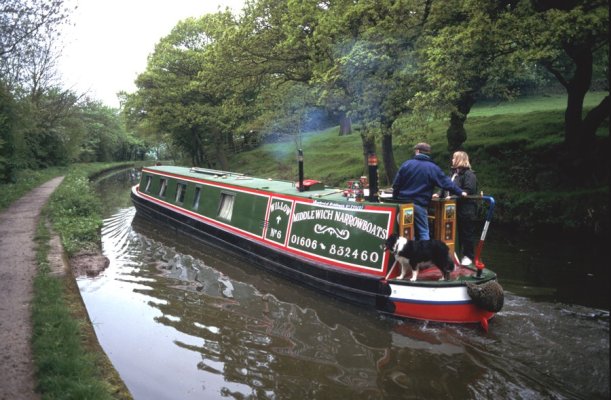timjet
Guru
- Joined
- Apr 9, 2009
- Messages
- 1,920
Hi Guys,
Still looking for that illusive boat. So far Ive only looked at 3, so Ive got a ways to go, but Im getting a little more knowledgeable with each viewing.
So far I havent considered boats with bigger engines, like the Sea-Rays and Vikings because of fuel economy. But this has gotten me to thinking; does a boat with big engines operating way below its max operating speed really use more fuel than a similar displaced boat operating at the same speed, but with smaller engines operating at its cruising speed. For example: Consider a 36 Island Gypsy, 22,000 lbs with *twin 135 HP diesels running at 8 kts, probably at about 2000 rpm. Compare that with a 40 Sea Ray, same weight with twin 450 hp diesels running at 8 kts, at probably around 1100 rpm.
My guess is the Sea Ray will use more fuel because those massive engines are slinging a lot more internal iron, but how much more? I know an exact answer is not possible because there are many variables, especially the design of the hull, but can anybody give a general rule of thumb on this?
Heres my guess, but with no data or experience to back it up; Big diesel engines (450 hp) operating at just above idle to 1100 rpm are pretty economical, perhaps very close in fuel flow to a smaller engine operating at cruising speed. Above this speed though the fuel use on the big engine goes up astronomically along with just a modest increase in boat speed. *The smaller diesels are pretty economical all the way up to around 80% WOT which should result in a boat speed of around 8-10 kts in my above examples.
Anyone care to chime in on this.
Part 2:
Does continuously operating a diesel engine well below its normal operating rpm do permanent damage?
Still looking for that illusive boat. So far Ive only looked at 3, so Ive got a ways to go, but Im getting a little more knowledgeable with each viewing.
So far I havent considered boats with bigger engines, like the Sea-Rays and Vikings because of fuel economy. But this has gotten me to thinking; does a boat with big engines operating way below its max operating speed really use more fuel than a similar displaced boat operating at the same speed, but with smaller engines operating at its cruising speed. For example: Consider a 36 Island Gypsy, 22,000 lbs with *twin 135 HP diesels running at 8 kts, probably at about 2000 rpm. Compare that with a 40 Sea Ray, same weight with twin 450 hp diesels running at 8 kts, at probably around 1100 rpm.
My guess is the Sea Ray will use more fuel because those massive engines are slinging a lot more internal iron, but how much more? I know an exact answer is not possible because there are many variables, especially the design of the hull, but can anybody give a general rule of thumb on this?
Heres my guess, but with no data or experience to back it up; Big diesel engines (450 hp) operating at just above idle to 1100 rpm are pretty economical, perhaps very close in fuel flow to a smaller engine operating at cruising speed. Above this speed though the fuel use on the big engine goes up astronomically along with just a modest increase in boat speed. *The smaller diesels are pretty economical all the way up to around 80% WOT which should result in a boat speed of around 8-10 kts in my above examples.
Anyone care to chime in on this.
Part 2:
Does continuously operating a diesel engine well below its normal operating rpm do permanent damage?

